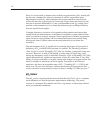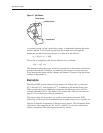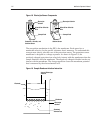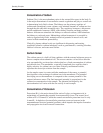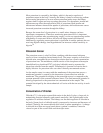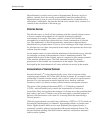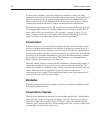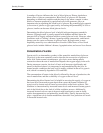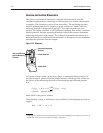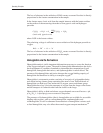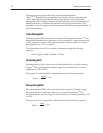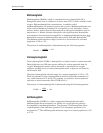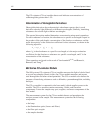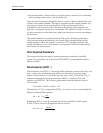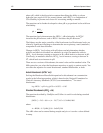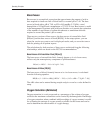
IĆ20 800 Series Operator's Manual
The glucose and lactate biosensors are complete electrochemical cells that
incorporate amperometric technology to measure glucose or lactate concentration
in samples. The biosensors consist of four electrodes.
* The measuring electrode
contains platinum and glucose oxidase or lactate oxidase in a binder, while the
reference electrode is composed of Ag/AgCl. Two other electrodes are also
present. The counter electrode is a Pt (platinum) conductor that ensures a constant
applied potential. Another measuring electrode, without the enzyme, determines
interfering substances in the sample. The potential from interfering substances is
removed from the total differential measurement. A microporous cover membrane
separates the electrodes from the sample.
Sample Path
Counter Electrode
Glucose Measuring
Electrode
Reference Electrode
Interference Measuring
Electrode
A constant voltage, called a polarizing voltage, is maintained during analysis. In
the glucose sensor, glucose from the sample interacts with the glucose oxidase on
the surface of the measuring electrode to form hydrogen peroxide and gluconic
acid
C
6
H
12
O
6
) H
2
O ) O
2
GOX
³
C
6
H
12
O
7
) H
2
O
2
(glucose) (gluconic acid)
where GOX is the glucose oxidase.
The polarizing voltage is sufficient to cause oxidation of the hydrogen peroxide to
oxygen.
H
2
O
2
³ 2H
)
) O
2
) 2e
–
* Platinized activated carbon electrode technology license from Cambridge Life Sciences plc. under U.S.
Patent Nos. 4,970,145 and 5,160,418 and foreign counterparts.



